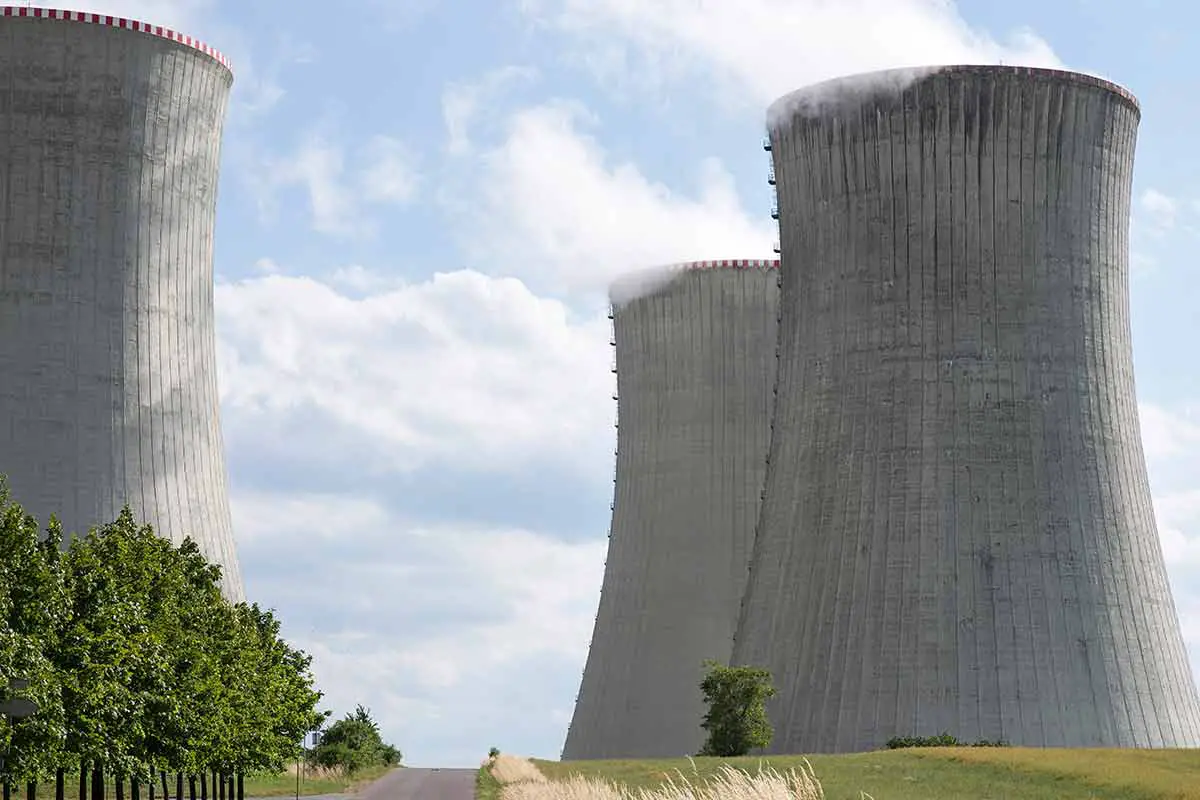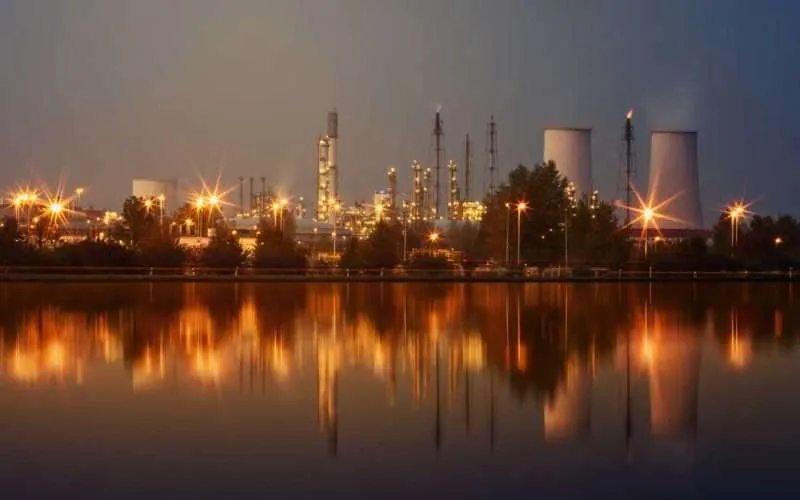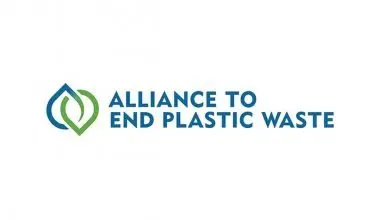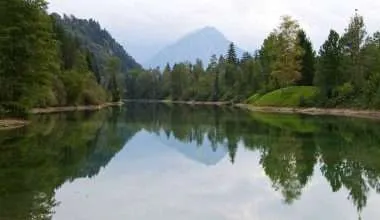Table of Contents Show
What is Thermal Pollution?
Thermal pollution is an abrupt change in the temperature of a natural body of water, which can be the ocean, lake, river, or pond, mainly because of industrial activities.
People usually do not think of it as pollution proper. When asked about it, they will perhaps think about carbon emissions, individual pollution, waste, and a range of other issues.
Yet, this is a genuine and persistent issue in our contemporary society.
In simple terms, thermal pollution occurs when industries take water from a natural source and either heat or cool it down.
These industries then release that water back into the natural resource. Mixing of this used effluent alters the oxygen levels resulting in ruinous effects on native ecosystems and communities.
Typically, these facilities use it as a cooling technique for their equipment or to help in their production process.
Plants that manufacture products and produce warm drainage are often responsible for thermal pollution.
Many individuals and governments have taken steps to regulate its use by factories. The goal is to control the effects of thermal pollution but the effects continue.
Causes of Thermal Pollution
1. Water as a Cooling Agent in Industries
Manufacturing and production industries are the primary sources of thermal pollution. These factories collect water from nearby sources. It helps to keep machines cool while preventing overheating. The process heats the water. Plant managers then release this heated effluent back to the source..
Mixing heated drainage into a river or ocean causes an abrupt increase in its temperature. The sudden change in temperature decreases the oxygen supply and affects the ecosystem.
Moreover, rapid changes in water temperature can kill fish and other organisms that have adapted to a particular heat range.
Similarly, the discharge of heated effluent harms aquatic plant life, which has adapted to a steady level of oxygen and warmth.
By changing their natural environments, manufacturing plants lessen the well-being of marine organisms. This change may wipe out the habitats of aquatic life if industries do not rectify such practices.
This change may eventually eradicate habitats of aquatic life if industries do not correct such practices.
2. Soil Erosion
Soil erosion is another key reason that causes thermal pollution. Regular soil erosion causes water bodies to surge, making them more exposed to sunlight.
Moreover, streamside erosion can strip away plants, exposing the water to solar heat. Of course, its temperature will soar.
The high temperature can become deadly for aquatic biomes since it can give rise to anaerobic conditions.
Anaerobic conditions are the absence of oxygen in marine environments. The reduced dissolved oxygen is detrimental to aquatic wildlife.
3. Deforestation
Trees and plants prevent sunlight from shining on lakes, ponds, or rivers. Deforestation leaves these water bodies unprotected from sunlight. Therefore, they absorb more heat and become warm.
Moreover, deforestation is one of the primary causes of greenhouse gases, leading to global warming in the atmosphere.
4. Runoff from Paved Surfaces
Urban runoff released into surface waters from paved surfaces such as roads and parking lots may cause the water to warm up. In the summer seasons, the pavements become very hot, which makes for warm runoffs that enter into the drainage systems and water bodies.
5. Natural Causes
Natural sources are also a source of this phenomenon.
Volcanoes, geothermal vents, and hot springs below the oceans and seas can cause sudden temperature increases in immediate surroundings.
Lightning may, too, contribute a large amount of heat to the oceans in a matter of moments. The temperature of the surrounding water will increase suddenly, altering the adjacent environment adversely. Lightning spreads out over the water, which acts as a conductor. It electrocutes fish that are near the surface.
6. Retention Ponds
Retention ponds can cause thermal shock since small and shallow ponds can take in quite a bit of heat energy from the sun.
Adding this hot water to a river, lake, or creek causes a sudden steep temperature rise. It is the same as pouring a hot jug into a bathtub filled with water which causes the water to increase a few degrees Fahrenheit.
7. Domestic Sewage
Usually, cities dispose of untreated domestic sewage into rivers, lakes, canals, or seas.
These natural water reservoirs have lower temperatures than municipal sewage but heat up with the influx of sewage.
With the rise in temperature of the natural water body, the dissolved oxygen (DO) lessens, and the need for oxygen rises, forming anaerobic conditions. Thus influx of sewage disturbs the aquatic equilibrium.
8. Thermoelectric Power Generation
Thermoelectric power plants are usually adjacent to bodies of water to have a consistent water supply. They need water from natural sources such as rivers for electricity production. The plant converts it into superheated steam to drive turbines for electricity generation.
The steam turns back into the water after passing through machines. The engineers then discharge the heated effluent back to the source. It is still at higher temperatures and causes thermal pollution when mixed into the natural water environment.
Effects of Thermal Pollution
Among academics, there are commonly two schools of thought when discussing the effects of thermal pollution.
Some focus on the negatives of this contamination in marine ecosystems. They point out the detrimental effects of thermal shock on constructive environmental practices.
But, some have the view that without these industries functioning the way they do, we cannot hope to continue existing lifestyles.
However, the consequences of thermal pollution on ecosystems significantly prevail over any benefits industries hope to have by contributing to the pollution.
1. Decrease in DO (Dissolved Oxygen) Levels
The warm temperature decreases the levels of DO (Dissolved Oxygen) in water. Warm water has comparatively less oxygen than cold water. The reduction in DO can increase anaerobic conditions and trigger suffocation for plants and animals like fish, amphibians, and copepods.
Warmer water lets algae thrive on its surface. Over a long duration, increasing algae may lessen oxygen levels in the water.
2. Increase in Toxins
Industries constantly release hot waste into water, causing toxins to mix with natural bodies of water.
Industrial coolant contains fuel oil, solvents, and heavy metals that harm the environment. Moreover, these pollutants make organisms vulnerable to diseases.
Pesticides in farm runoff also add to toxin buildup.
3. Loss of Biodiversity
Slowing of biological activity in the water can prompt large biodiversity loss.
Variations in the environment might cause some organisms to move from their habitat. However, some other species may move in because of warmer temperatures.
Organisms that can adapt might have an advantage over organisms unused to warmer temperatures.
4. Ecological Impact
Sudden thermal shock can cause massive mortality of fish, insects, plants, or amphibians. A drop in the biological activity in the water can prompt substantial biodiversity loss.
Variations in the environment might cause some organisms to move from their habitat. However, several other species may move in because of warmer temperatures.
Numerous aquatic species are vulnerable to slight temperature alterations. A change of one degree Celsius can alter organism metabolism and cause other adverse cellular biological effects.
5. Affects Reproductive Systems
Warmer water reduces the reproductive ability of some organisms. Birth defects become more frequent in the affected marine population. Some marine wildlife may also lay deformed eggs. Both birth abnormalities and premature eggs hurt the reproductive ability of marine wildlife. Aquatic species achieve the most fertility in a certain habitat within a specific range of temperatures. Fertility declines with the increase in water temperature and can reduce the marine population.
6. Increases Metabolic Rate
An altered warm environment escalates enzyme activity which boosts metabolism in organisms. Hence the organisms consume more food.
So it upsets the food chain stability and changes the equilibrium of species composition.
7. Migration
Warmer water can force some species to migrate to find suitable habitats that meet their survival requirements. This disruption in the food chain can lead to losses for species dependent on them for sustenance.
Thus abrupt warm environment disturbs the food chain.
Viable Solutions to Thermal Pollution
Solutions to thermal pollution are necessary to mitigate the damaging effects on the marine ecosystem in the future. Some measures convert the thermal wastes from power plants into beneficial heat resources. Solutions to thermal release into water bodies are as follows:
1. Cooling Ponds
Cooling ponds are a simple means of reducing thermal pollution. They involve constructing shallow ponds near power plants, where heated water can be retained to cool down gradually before being released back into the environment. This allows the temperature to return to a level that minimizes ecological impact
2. Cooling Towers

Cooling towers are widely used in power plants to cool hot water before releasing it back into natural water sources. By using evaporation and convection methods, cooling towers can significantly remove the heat from the water, thus minimizing the impact on aquatic life.
3. Artificial Lakes
Artificial lakes are man-made water bodies that provide a potential alternative. The heated wastes can be released into the lake at one end, and the water can be drawn from the other end for cooling purposes. In due course, the heat dissipates via evaporation. Still, these lakes have to be refreshed constantly.
4. Water Recycling
Scientifically treated water can be reused for local or industrial heating, reducing heat waste. Industrial cogeneration recycles waste heat for specific purposes, thus lessening the issue of thermal pollution.
5. Other Applications
The thermal discharge (wasted heat) of power plants may be used for further purposes:
- Industrial and space warming.
- Biological practices like soil warming.
- Fish culture, livestock shelters and warming greenhouses.
The thermal discharge (wasted heat) of power plants may be used for further purposes:
But, the most essential thing to think though is that the effects of thermal pollution are far more serious than the human need for it to continue.
Factories, plants, and industries have ability find effective methods reduce thermal pollution. yet, many of them are not practicing it since it’s only easier to function with the long existing model.
We have to endorse a thriving environment that values marine biology. Thus, we have to strive to address the issue of thermal pollution.
Enforcing these solutions and adopting sustainable practices can reduce thermal pollution. Moreover, we can preserve the health of our water ecosystems for posterity.






